structure Information
Overview
The more you know about your structure the better prepared you are for your experiment. You will need this information to help with alignment. From the analysis machines you can access the Inorganic Crystal Structure Database (ICSD) which many find useful for knowing the structural information. The Materials Project is another good source of crystallographic information, albeit the information is from DFT calculations.
ICSD
When You log into the ICSD you will see the search window shown in Figure 1.
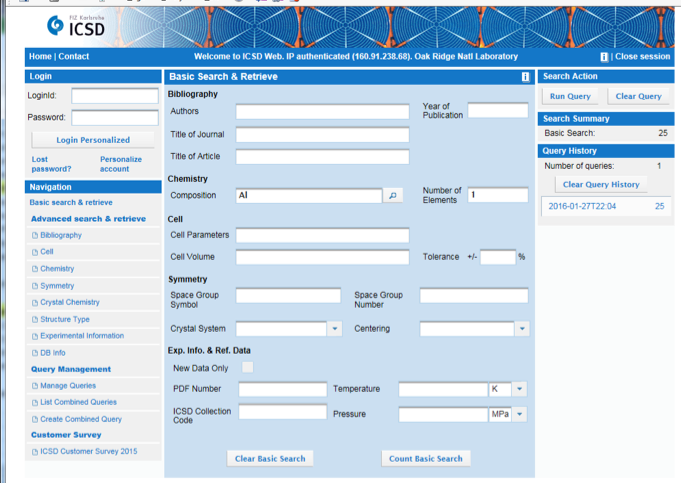 |
| Figure 1. The startup window to search the ICSD. |
If you type an element in the material in the Composition box ( in this case Al) and then the number of different elements in the Number of elements box and then hit the
Run Query button, the result will be Figure 2 which shows a list of all the entries of Al with one element.
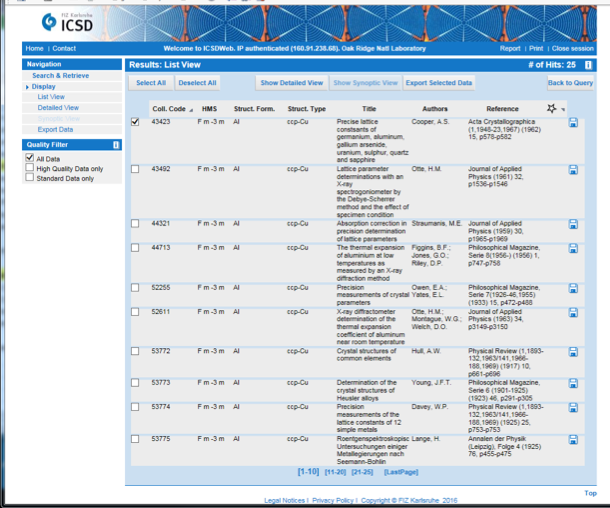 |
| Figure 2. The result of a search for Al |
Selecting the check box of the first item and pressing the Show Detailed View button.
Shows the details of that entry in Figure 3.
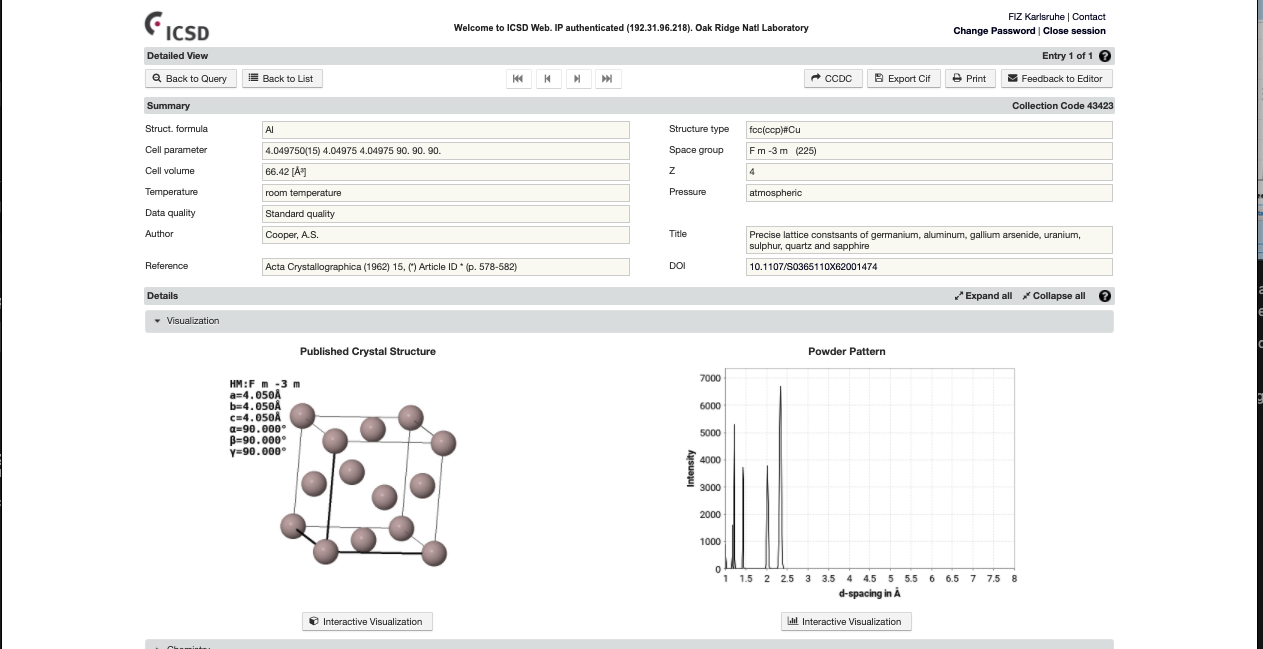 |
| Figure 3 The ICSD detailed view for Al |
Expanding the visualization will show a powder pattern. To generate a table of Bragg peaks, select Interactive Visualization to see Figure 4.
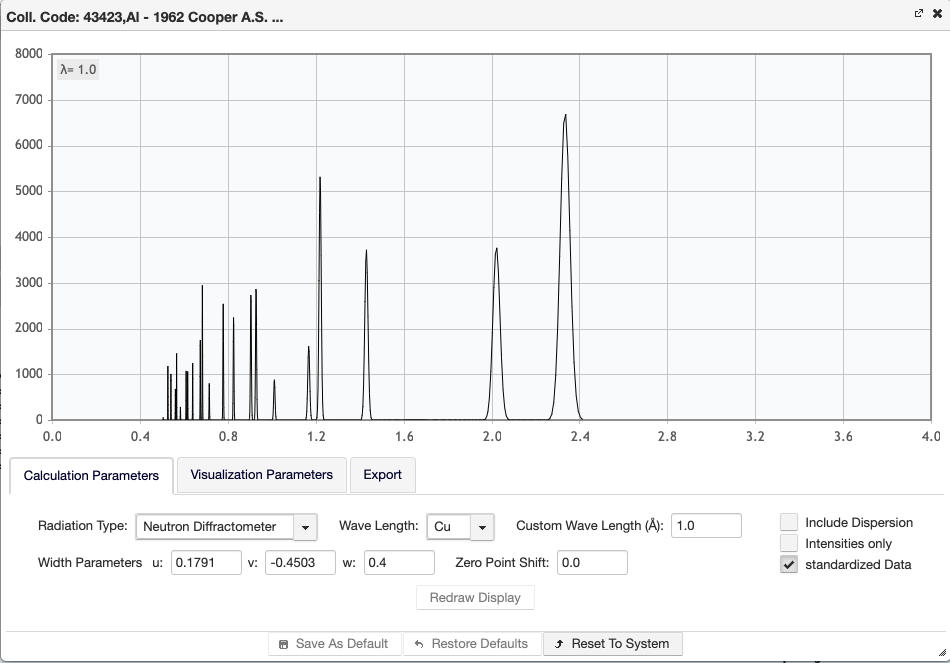 |
| Figure 4 The Calculation Parameters Tab for Al |
Here in the Calculation Parameters tab, choose Neutron Diffractometer. Then set a Custom Wavelength of 1 angstrom.
Next select the Visualization Parameters tab as shown in Figure 5.
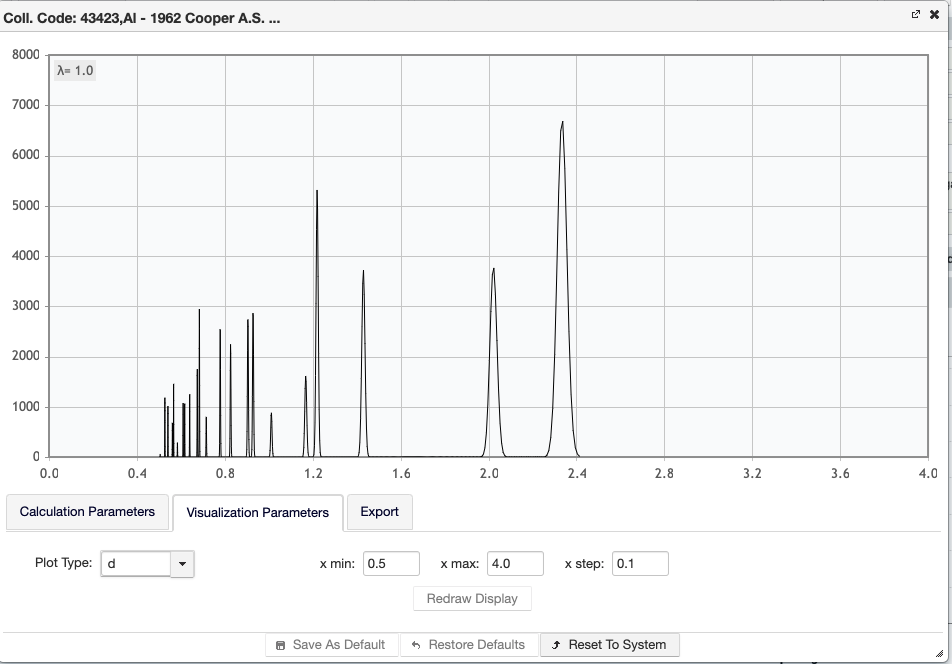 |
| Figure 5 The Visualization Parameters Tab for Al |
Choose Plot Type d and an x min and x max that reflect the properties of your material. Then select Redraw Display.
Now to create the list of Bragg peaks, go to the Export tab in Figure 6.
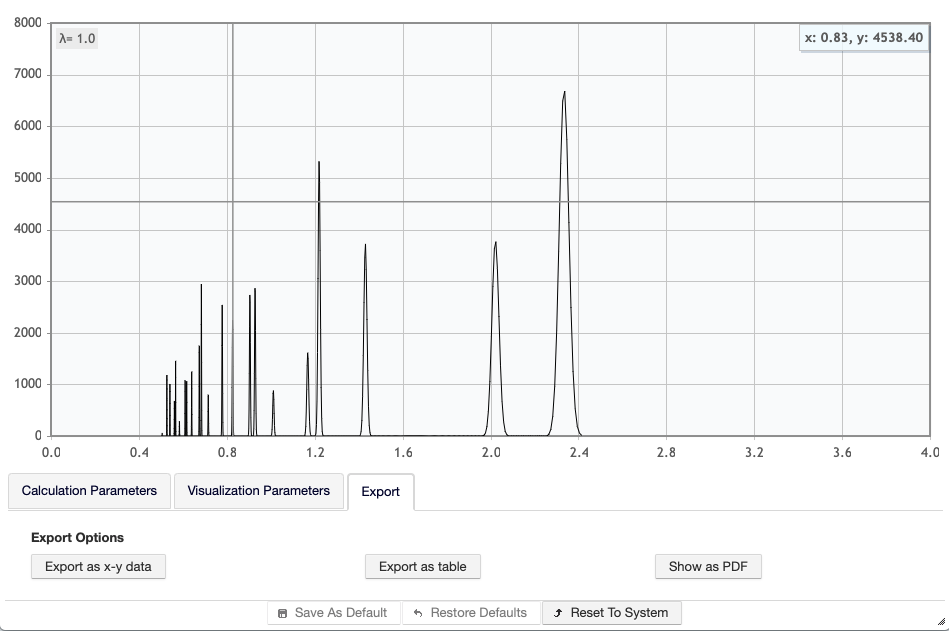 |
| Figure 6 The Export Tab for Al |
and click Export as table
